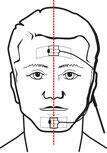
Suitability of the JAWAC Sensor to Complement CO2 Monitoring to Detect Obstructive Apnea during Propofol TCI Sedation
2R&D, NOMICS S.A
Background: Induced obstructive apnea still occur during propofol sedation despite CO2 monitoring. This even leads to episodes of oxygen desaturation. The Jaw activity analysis system ( JAWAC) has become a monitor of reference to detect sleep obstructive apnea (1).
Objective: Our purpose was to analyze the JAWAC and CO2 (CapnoLine) monitoring signals to define a more reliable and faster recognition sequence for obstructive apnea than CO2 monitoring alone.
Methods: This study was registered on ClinicalTrial.gov [NCT02909309]. 21 participants scheduled for sleep endoscopy were recruited. SPO2, CO2, JAWAC and BIS signals were recorded continuously. Propofol TCI sedation (Marsh pharmacokinetic model) was started at a 2 µg/ml and progressively increased by 1 µgml. Apnea was defined as a zero value lasting 10 seconds on the CapnoLine.
Results: 54 episodes of obstructive apnea were recorded. The combination of the analysis of the JAWAC signal with the respiratory rate from the CapnoLine determined a new recognition sequence. On average, this sequence detects apnea 37 seconds before CapnoLine. Kappa agreement comparing this sequence and the CapnoLine was very good reaching 68%. Sensitivity and specificity of the sequence were 76% and 92.5%, respectively.
Conclusion: Even if CO2 monitoring is recommended by scientific societies, it does not predict all episodes of obstructive apnea during propofol sedation. The simultaneous use of both JAWAC and CapnoLine sensors seems to provide a more reliable and faster signal to detect obstructive apnea during propofol sedation. This combination should be assessed during different sedation techniques and other procedures.
(1) Martinot, Respirology 2016



Powered by Eventact EMS